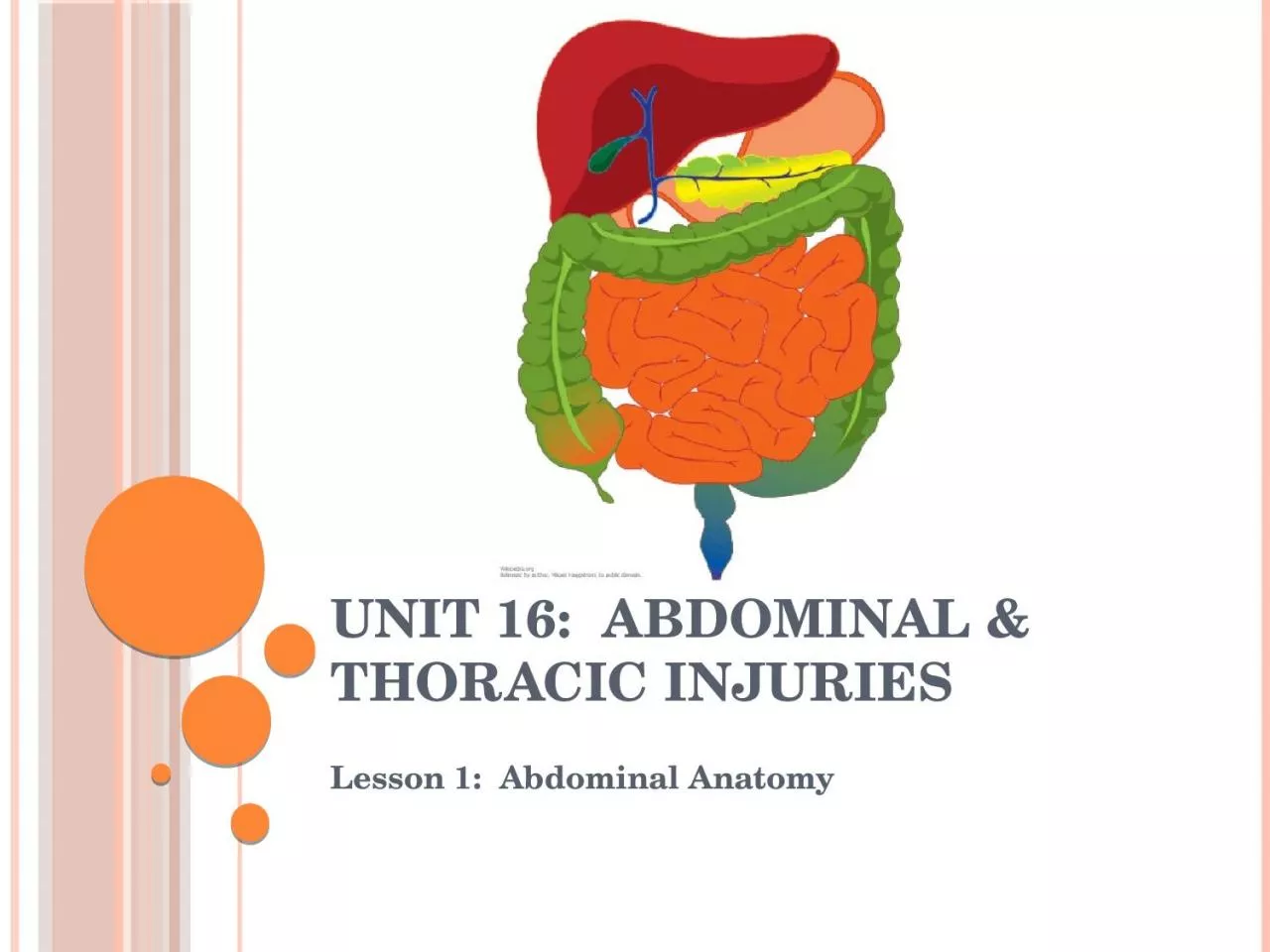

Lesson 1 Abdominal Anatomy Bell Work Grab binders and note taker In your bell work log Create a list of the ORGANS within the abdominal cavity Objectives Recognize relevant anatomy of the abdominal cavity ID: 1031964
Download Presentation The PPT/PDF document "Unit 16: Abdominal & Thoracic Injur..." is the property of its rightful owner. Permission is granted to download and print the materials on this web site for personal, non-commercial use only, and to display it on your personal computer provided you do not modify the materials and that you retain all copyright notices contained in the materials. By downloading content from our website, you accept the terms of this agreement.
1. Unit 16: Abdominal & Thoracic InjuriesLesson 1: Abdominal Anatomy
2. Bell WorkGrab binders and note takerIn your bell work log…Create a list of the ORGANS within the abdominal cavity
3. ObjectivesRecognize relevant anatomy of the abdominal cavity
4. TerminologyAbsorptionA process where digested food moves into the bloodstream to be used throughout the bodyAntibodiesA type of cell produced by the spleen to defend the body against foreign cellsBileA substance produced by the liver that neutralizes the acid of the stomach and helps digest fat in the small intestineChymeA semi-liquid substance formed when ingested food is mixed with digestive fluids from the stomachDetoxifyThe process of breaking down harmful chemicalsDiaphragmA large muscle located between the chest and the abdomen that helps control breathing
5. The Abdominal Cavity BoardersAnteriorAbdominal MusclesPosteriorLumbar SpineSuperiorDiaphragmInferiorPelvisLumbar SpinePelvis
6. The Abdominal Cavity QuadrantsUpper RightUpper LeftLower RightLower LeftRememberAthlete’s right & left--not clinicians.LRLLULUR
7. The Abdominal Cavity OrgansThree organ systems reside in the abdominal cavityDigestive SystemUrinary SystemReproductive System
8. Abdominal OrgansSolid OrgansContain large blood supplyInjury to these are generally life threateningEx: Liver, Kidneys, Spleen, PancreasHollow OrgansOrgans that are able to bend and moveInjuries to these are less seriousEx: Stomach, Intestines, Appendix
9. LiverSecretes bile for digestionDetoxifies harmful chemicalsHollow or Solid?
10. Gall BladderStores bile the liver used in digestionHollow or Solid?
11. PancreasProduces insulin Secretes pancreatic juice for digestionLiverGall BladderPancreas
12. KidneysFilters blood from the rest of the body Excretes waste products in the form of urine
13. StomachFood mixes with secretions to form chyme
14. SpleenStores and regulates the number of red blood cells in the bodyProduces antibodies
15. IntestinesWhere digestion and absorption takes placeFinal digestion and absorption of food occursChyme is converted to feces to be expelledSmall IntestineLarge Intestine
16. Urinary Bladder Stores and helps expel urine
17. AppendixSmall “worm” like tube off of the large intestine The opened end drains into the large intestineThe wall of the appendix makes a mucus that has antibodies to help the immune system
18.
19.
20.
21.
22.
23. The left kidney is located slightly more superior than the right kidney due to the larger size of the liver on the right side of the body.
24. ClosureList the borders of the abdominal cavityWhat 3 organ systems are located in the abdominal cavity?What quadrant is the liver?What quadrant is the appendix?What quadrant is the stomach?